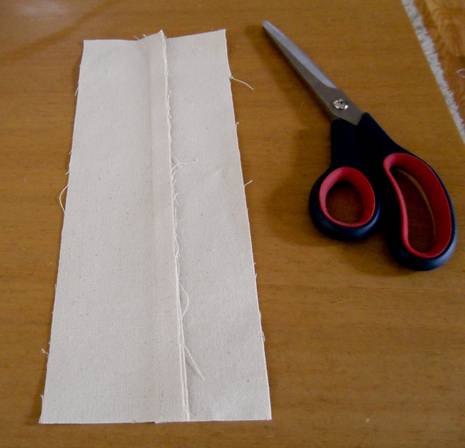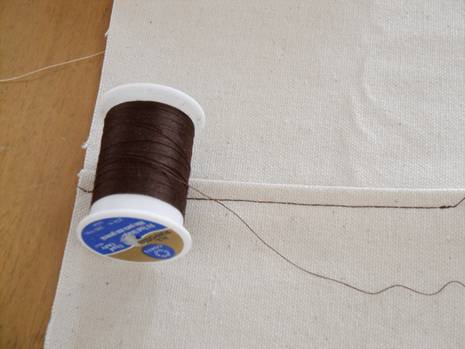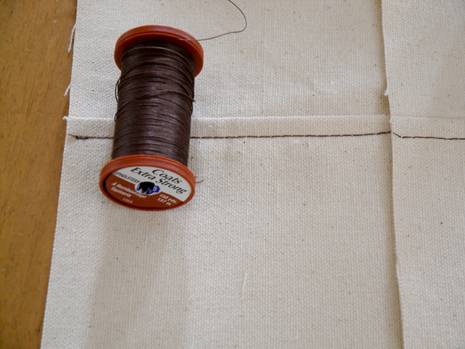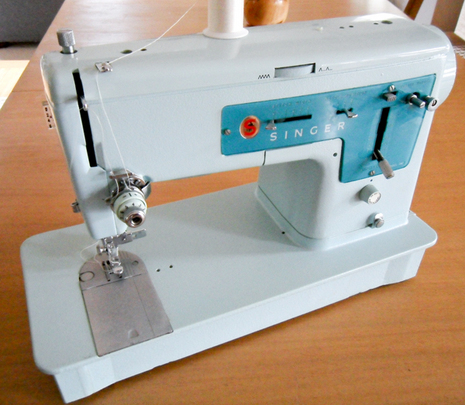First of all, notice my aqua Singer, circa 1970’s, that I found a couple of months ago at the Salvation Army Superstore for $10.00. Serviced and cleaned up, it’s one of my favorites. Now, on to the matter at hand; one drawback to sewing home furnishings with a lightweight machine is that it’s difficult to get the durability you need from plain old All Purpose thread. What you really need to get the job done right is a true commercial machine that will accept upholstery weight thread. Sewing machines designed for home use, especially inexpensive new machines, aren’t set up to handle upholstery weight thread. However, there is a trick I learned from a talented costume seamstress/Hancock Fabric Assistant Manager. Here’s what you can do to get strong durable seams and professional looking topstitching using your home machine.
1. Thread the top of the machine with upholstery weight thread and use All Purpose thread in the bobbin
2. Use a heavy duty needle in the machine. I use either a needle made for denim/jeans or leather. The eye is larger so it won’t fray the upholstery thread
Check out the difference that heavier thread makes on this canvas topstitching.
1/2″ seam allowance on a canvas strip

Topstitching with All Purpose thread in both the top and the bobbin

Upholstery weight thread in the top and All Purpose thread in the bobbin

I didn’t even change the tension on my machine. This may not work on all home sewing machines but it’s worth a try if you need to do heavy weight sewing.
One other obstacle to sewing heavy weight upholstery fabric on a home machine is that the presser foot only raises so far. Depending on how thick your fabric is, it can be impossible to get double and triple layers of heavy upholstery fabric to move through the machine.

I will take the unpopular side of this discussion and suggest that a chain is only as strong as it’s weakest link. If you are creating stitches with heavy on top and all-pupose on the bottom, you will still only have an all-pupose strength of stitch. Think about it . . . if you tie a powerful dog to your porch using two pieces of twine, eventually he will break the twine. If you do the same thing and tie a piece of twine to a piece of nautical rope, eventually he will still break the twine. The rope does not make the knot stronger. It just provides an unyielding point of resistance, against which the weaker material will still break.
My suggestion if attempting to do heavy work on a home machine (modern or vintage), is to use the same thread top and bottom. Adjust tensions if necessary. And at some point depending on the thickness/density of your fabric, and/or the thickness/weight of your thread, you many just have to concede that your machine can’t handle it. However, in my experience, making proper adjustments, using balanced threads, using a NEW heavy duty needle, and using careful technique feeding the material through, most home machines are far more capable than what we often presume.
Very helpful insight in both the article and this response! Thank y’all!